Teaching Your Baby Sign Language: Do's & Don'ts with @signngrow Mary Smith
- How sign language helps babies develop language and no it does not delay language development or make lazy babies who don't want to talk
- Why babies need to practice a sign a number of times before they master it, and how you can help reinforce signs at mealtime
- What to avoid when starting to teach your baby sign language as well as tips for helping baby click with those signs!
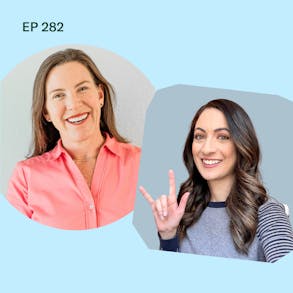
LISTEN TO THIS EPISODE
Episode Description
Did you know you shouldn’t cover your baby’s hands when they are practicing signs? Mary Smith from Sign ‘n Grow is on the podcast with great information about what to do and what to avoid when it comes to teaching baby’s sign language. Mary is an ASL Interpreter, author and mom and she is sharing her 3 favorite mealtime signs and a lot of other resources for showing your baby how to learn sign language.
About the Guest
- Mary Smith received her degree in Deaf Studies in 2010 and has provided Sign Language services in the Deaf community for nearly 10 years in both California and Colorado
- Founder and instructor of Sign ‘n Grow Baby Sign Language
- Follow @signngrow on IG, Sign ‘n Grow on FB

Links from This Episode
- Mary Smith from Sign ‘n Grow’s Baby Sign Language book on Amazon (affiliate link).
- Mary Smith’s Sign ‘n Grow website: https://www.signngrow.com/
- Mary Smith’s Sign ‘n Grow YouTube channel.
- Baby-Led Weaning with Katie Ferraro program with the 100 First Foods™ Daily Meal Plan, join here: https://babyledweaning.co/program
- Baby-Led Weaning for Beginners free online workshop with 100 First Foods™ list to all attendees, register here: https://babyledweaning.co/baby-led-weaning-for-beginners

Latest Episodes

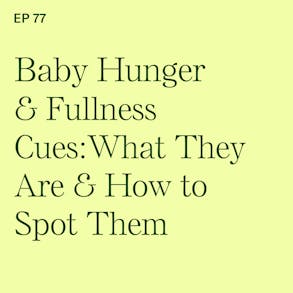
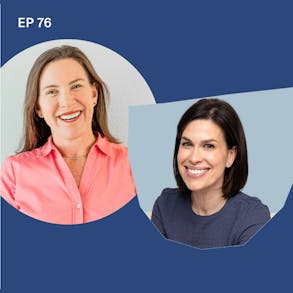
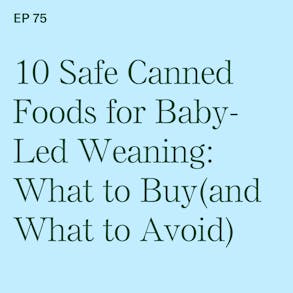
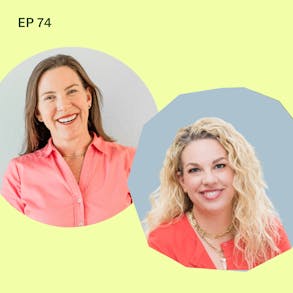
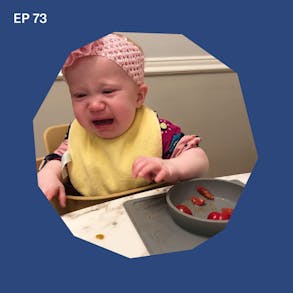
Mary Smith (1s):
So whenever you are speaking the word out loud to your baby, just adding in the sign to your sentence so that then you are getting in the habit of it. So it's not something separate that you do throughout the day, you're just incorporating it into your daily routine.
Katie Ferraro (15s):
Hey there. I'm Katie Ferraro, Registered Dietitian, College Nutrition professor and mom of seven specializing in baby-led weaning Here on the baby-led weaning Made Easy podcast. I help you strip out all of the noise and nonsense about feeding, leaving you with the confidence and knowledge you need to give your baby a safe start to solid foods using baby-led weaning. Teaching Your Baby Sign Language. Are you guys honestly doing it? It was something that I like kind of heard about when I had babies. I'm like, I have way too many other things to do. I cannot possibly handle teaching them basically a different language. But in hindsight, you know, sometimes you'll like, oh, I wish I knew about baby-led weaning when my babies were little.
Katie Ferraro (59s):
I wish I spent more time learning about baby sign language and teaching babies sign language. But I didn't know about Mary Smith back in the day when my babies were babies, but you guys do. Mary Smith is from Sign n Grow. She's been on the podcast before talking about the benefits of teaching Sign Language to your baby. But she's back today talking about the dos and the Don't for Teaching Babies Sign Language. Mary is the creative behind the very popular Instagram site @Signngrow. She teaches American Sign Language to Babies. She has a brand new book called Baby Sign Language. It's absolutely beautiful if you're a visual learner, which sometimes on a podcast people are like, I'm not, that's why I'm here listening.
Katie Ferraro (1m 41s):
But if you do like seeing things, I think with teaching Baby Sign language, you really do have to see it. And Mary does such a beautiful job of teaching. She's gonna talk to you guys about what you should be doing and not doing when it comes to Teaching, Your, Baby, Sign, Language, as well as some of the benefits. So with no further ado, I wanna welcome Mary Smith from Sign n Grow who's here to talk about Teaching Your Baby Sign Language, sharing some do's and some don'ts.
Mary Smith (2m 6s):
Hi Katie. Thank you so much for having me on again.
Katie Ferraro (2m 9s):
Now it has been a while since we chatted. I was looking it up: 120 episodes ago to be exact. So you were on the podcast back in episode 162 and it was called "How to use Sign Language to Improve Mealtime Communications with Sign n Grow Mary Smith." And we got so many nice messages about how helpful the interview was and just they love the idea of teaching babies sign language. So I wanted to have you back on and before we start talking about the do's and the don'ts of teaching babies sign language, could you give us an update? What have you been working on since we last chatted on the podcast, which was back in September of 2021? What's new with you in your business?
Mary Smith (2m 42s):
Oh my gosh, so much has happened, but I will keep it short and just give you the rundown. I've had the opportunity to teach thousands more families on the Sign n Grow Instagram page. I also have started a Sign n Grow YouTube channel and released a dictionary on the sign n grow YouTube channel of over 100 sign videos. But the biggest thing that I've worked on is a book. I've created a book now it is called "Baby Sign Language: A fun and Simple Guide for Early Communication." And it has all of the strategies and everything that parents need for teaching their babies how to communicate early during those frustrating few months when babies know what they want and need, but they can't say the words physically yet.
Mary Smith (3m 29s):
So this book covers it all and Katie, you'll be happy to know that there is an entire chapter just on mealtime signs and strategies specifically for teaching meals.
Katie Ferraro (3m 40s):
That's the one that I skipped immediately too because I thank you to your publisher sent me an advanced copy of it. The book is beautiful you guys like, it's kind of hard to talk about sign language on a podcast, which is for you know, auditory learners. But if you are a visual person, you like to see the signs. I know a lot of our listeners are already following your Instagram page signnngrow, but Mary's new book is absolutely beautiful as far as I know. There's nothing else out there and I know it's part of why you created the book was because this resource wasn't out there. But I love the visual side of what you do and I love your YouTube channel. We were chatting earlier, but we recently started a YouTube channel. It's totally different game than any of the other platforms but I think it's so amazing that you have the dictionary out there on your YouTube channel.
Katie Ferraro (4m 23s):
You have the signs in your book, like just so many opportunities for parents to learn. And I wanted to start today's conversation just by asking, you know, how can babies knowing sign language at meal times help them communicate with their caregivers?
Mary Smith (4m 37s):
Absolutely knowing what your baby needs during meal times is so important because so much frustration happens during meal times. Babies aren't able to communicate verbally if they are hungry or if they are full. So teaching your baby to Sign n then getting their feedback on whether they want more or if they're all done, that really helps you know, if you should keep on feeding your baby if they're done instead of them, you know, throwing a bunch of spaghetti in your face to tell you that they're done So, it can be really helpful and it also reduces frustration for them.
Mary Smith (5m 18s):
Frustration for you, less whining, less screeching So. It is so, so helpful.
Katie Ferraro (5m 25s):
I love that you always say they want to tell you things, they just don't have words to say yet. So this is kind of how you can bridge that gap where you can understand what your baby is trying to say in a way that's developmentally appropriate because we know that babies can learn how to Sign n you have so many resources for teaching parents to do that. What about some tips for parents who are considering baby sign language? What should they do? Let's start with the do's before the don'ts. What should they focus on if this area is new to them?
Mary Smith (5m 51s):
So a few signs to start focusing on would be signs that are causing the most frustration for you and your baby. So especially for super young babies, what they want to communicate is their basic needs like hunger, tiredness, wanting milk. So those are gonna be what you wanna focus on first when you're getting started so that you can reduce a lot of that frustration first. However, if you have a child who is maybe a little bit older, maybe they have a favorite toy that they're always whining about cause they always lose it or you know maybe they're always whining for the pacifier or whatever it is, then you can add in signs for those things, the toy, the pacifier, their favorite book so that they're able to communicate those things without being so frustrated that they know exactly what it is that they need.
Mary Smith (6m 46s):
They just can't tell you and you don't know what it is that they need. So starting with the signs that are gonna reduce the most frustration is gonna be the most helpful and you can find a lot of those signs, like I said on the Sign n Grow dictionary, which is on the Sign n Grow YouTube channel and also on the Sign n Grow website signngrow.com. However, other things that you can do if you've already been doing that are using the sign with the spoken word. So whenever you are speaking the word out loud to your baby, just adding in the sign to your sentence. So for example, if you're saying okay, it's time to eat, instead of just saying that sentence without any signs, you can add in the sign for eat or food so that then you are getting in the habit of it so it's not something separate that you do throughout the day, you're just incorporating it into your daily routine and just using the sign while you're saying those words to your baby.
Mary Smith (7m 42s):
So that is really helpful. Repeating it is very helpful. And then also just being as consistent as you can is going to really help too.
Katie Ferraro (7m 51s):
Hey, we're gonna take a quick break, but I'll be right back.
The Unbiased Science Podcast (8m 0s):
The Unbiased Science podcast is devoted to objective critical appraisal of evidence on health topics relevant to listeners daily lives. I'm Dr. Jess Steyer, a public health scientist with expertise in public health policy, biostatistics and advanced analytics. And I'm Dr. Andrea Love an immunologist and microbiologist with expertise in infectious disease, immunology, cancer, immunology and autoimmunity. And together we are the hosts of the podcast. The goal of the Unbiased Science podcast is to dispel misinformation and misconceptions across an array of science and public health topics. We love to debunk myths and help arm our listeners with information so they can make evidence based decisions. We hope you'll tune in to the Unbiased Science Podcast, your trusted source for no nonsense, just science new episodes, air every other Wednesday. So make sure to mark your calendars.
Katie Ferraro (9m 4s):
There are a lot of similarities between your field of expertise and minds sign language and infant feeding because repetition is key. And I know like in the infant feeding world we have research that supports this idea of repetition that babies may need to see a food between 10 15 other resources say more or less. The point is lots of times before they like or accept it, you don't just do broccoli once they don't eat it and you're like, oh my kid hates broccoli and we're never doing it again. Do you have any sort of like length of time that a parent could expect it to take a baby to learn a sign? And I'm sure it depends upon their age. So maybe a two part question. How old should babies be before you can start this approach?
Mary Smith (9m 41s):
Great, great question then a lot, two very big questions that you just asked me. So, it is kind of tough to say. Sometimes I do get messages from parents who say, how many times do I need to show my baby a sign before they sign it back to me or before they learn it? And that's kind of the same as how many times do I need to present a food to my baby until they eat it. There is no one answer but research shows and what I have seen also through my own teachings of tens of thousands of families is that parents who start signing to their baby around six months or earlier, we'll typically see their baby signing back between nine to 12 months old.
Mary Smith (10m 22s):
And in that time many babies can build a good vocabulary and a lot of babies don't even say their first word or first words until 12 months or later. So the signs are really helping during that gap of time. Now some parents choose to start signing with their baby at six months old. That is a great time to start because your baby is paying more attention to you. Babies are starting solid so it's a good time to incorporate mealtime signs. However, if parents want to start earlier, that is totally, totally fine. There is no early, too early to start. Parents can start at any time because just like any language, you can teach signs to your baby even from birth if you'd like.
Mary Smith (11m 9s):
And I know that the parents who see the biggest results have started the earliest because their babies start to calm down even if they're not signing back, they just see that sign for milk and they stop crying because they know that the milk is on the way that the parent is getting the milk ready. So to reap all those benefits, the earlier that you start the better.
Katie Ferraro (11m 31s):
And one interesting thing I learned from you, cuz I had always been a little bit hesitant to teach my babies' sign language because I had heard the myth that if you teach them sign language it will delay their speech development. And you set me straight and told me that that's definitely not true. So I don't know where I heard that. You know there's lots of myths in infant feeding and and baby-led weaning as well that that I'm constantly like how do people still think that? But that's probably one that you're like, oh my gosh, you really thought that? Like do you still hear that myth pretty frequently from parents?
Mary Smith (12m 0s):
Oh my gosh, yes. It is one of the top questions that I get. Won't this delay my child's speech? Or even worse, won't this make my child lazy? And then they're not going to talk because they're being too lazy to talk because they have the signs. It's actually not like that at all. The research has shown one, that it does not delay speech at all, two, there has been some research that has found actually that children who learn signs have a more advanced vocabulary as they get older and that it can actually support speech development. So signs are real words because we're using them from American sign language. So they are real words in American sign language.
Mary Smith (12m 43s):
They do go toward a child's word count and they are real language, so they're real language development and speech and language pathologists oftentimes use signs whenever they are teaching children to communicate. So children with speech or language delays, speech and language pathologists love using signs because it can help these children feel less frustrated while they are learning to communicate with more language. So, it is SLP approved and it is research proven.
Katie Ferraro (13m 18s):
I love that it counts each sign language sign that they learn counts as one of their words. I do a lot of work with speech language pathologists in the infant feeding space and they're always talking about counting words and I was like, I never counted my kids words. And they're like, well you're the hundred first foods lady, like you counted all of their foods but you didn't count the words. I was like, hey, to each their own. So when it comes to mealtime signs, are there any favorite mealtime signs that you can share or ones that you find are the easiest to start with?
Mary Smith (13m 44s):
Right. So I will try to explain these physically as much as possible while I am showing you the signs here so that those who are listening with just audio can hopefully visualize some of these. But I'm going to give you the top three: food. So for the sign for food, you're literally gonna make like an letter O with your hand and then you're going to tap it against either your chin or your mouth. Both ways are correct. This is also the sign for eat. So you can use this for food or eat. Also the sign for more is going to be with those two letter Os and you're going to kind of smoosh 'em together and you're going to tap the tips of your fingers together.
Mary Smith (14m 29s):
So you are tapping your hands together almost like your letter os are giving each other a little kiss twice. So imagine you have something on this side and on this side and then you're bringing them together to make a little pile in front of you. So more and that's going to help your child say that they want more. And then all done is going to be made with both of your hands, all of your fingers spread out in front of you, kind of like you're gesturing like the number 10 or giving somebody high fives with both hands, but you're gonna face your palms behind you and then you are going to twist your wrists forward so that then your palms end up facing in front of you.
Mary Smith (15m 13s):
And you can do that movement either once or twice and that is going to be the sign for all done. So these three signs are really good basic starter signs for helping babies just communicate a little bit about meal times. And I will tell you that the results are astounding because as soon as babies have a way to communicate and express themselves and finally experience some kind of empowerment over being able to express themselves to get a need or a want met, it just opens the door for so much more language.
Katie Ferraro (15m 50s):
Hey, we're gonna take a quick break, but I'll be right back.
Mindful Moment (15m 59s):
At a time when change is constant and we are pulled in far too many directions. We need a way to stay present to life and to increase our ability to remain calm, think clearly, and maintain our wellbeing. Many studies indicate mindfulness improves our mental, emotional and physical health. On a mindful moment with Theresa McKee, you can learn how to practice mindfulness and enjoy its many benefits. Tune in for guided meditations and to hear tips and advice from some of the most respected experts in the fields of mental health and mindfulness. The world truly can be a better place. It all starts with a mindful moment.
Katie Ferraro (16m 49s):
Mary, what about the don'ts? Like what are some practices that are best that we avoid when we're teaching baby sign language?
Mary Smith (16m 55s):
A couple of things that I want to mention here that especially come up during meal times. One don't, is to not put your hands over your baby's hands to try to help them make the sign. Even if you're doing it gently, most babies are going to find that frustrating. Some babies don't find it frustrating, some babies don't mind. So I tell parents, do what works for you. However most babies do find it more frustrating and we want signing to your baby to be something that's pleasant for them, not frustrating to them. And your baby will start to be able to make the signs when they're ready.
Mary Smith (17m 37s):
And I do have other modeling methods, which I do mention in my book and I have photos of how to do those strategies without actually physically putting your hands over your baby's hands. The other don't that I want to mention is to not withhold items from your baby. And that comes up a lot in mealtime. So for example, a parent might say, do you want more Apple? Show me more. And then they'll hold back the apple sauce or the apple piece is whatever it is until their baby signs more and then their baby starts fussing and gets angry. And that's because you're literally withholding something from your baby and trying to kind of bribe them into signing to you for them to get the food that they're hungry for.
Mary Smith (18m 26s):
So I don't recommend doing that again. We just wanna keep the signing something that's positive and that's building a bond between you and your baby because you're working together to get their needs met and reduce that frustration. So the other way to do that is to instead say, here is some more, I'm giving you more. And then continue to give your baby more instead of saying, oh okay, I'm gonna give this to you if you sign "more." And especially if they're not ready to do it yet, that's just so frustrating for them.
Katie Ferraro (18m 56s):
Okay, so don't make the offering of the item contingent upon whether or not they do the sign the right way.
Mary Smith (19m 1s):
Right.
Katie Ferraro (19m 2s):
Awesome. Well your new book is so beautiful. Thank you for sending us a copy. My kids are like obsessed with it right now because they don't know anything about sign language. I never did sign language with my babies, which I've shared with you before. But I think it is such a cool thing that parents do attempt to do. It's so good to know they can start early, help our babies communicate. I love that the book shows you how to see the signs. Just curious, what made you decide to do a book? How was that whole process for you? Cuz you've like kind of birthed this baby now that it's out in the world At the time of this podcast release, what was the whole impetus behind the book project?
Mary Smith (19m 33s):
Well, it was so exciting. I actually was contacted via Instagram. I was contacted via email, but it was a follower who was actually an editor at a publishing company and he was using signs with his own baby and found my Instagram page and then sent me an email and asked me if I would be interested in writing a book so that they could publish it. And I kinda went back and forth about it. I was like, I'm not sure I wanna do this. It's gonna be so much work. But I can definitely say that it is so wonderful to be able to now with over a year of writing the book and everything behind me to be able to actually hold this book in my hands.
Mary Smith (20m 16s):
And like you said, there isn't another book really like this. There are other baby sign language books out there. However, ours is the only one that has real photos of kids showing each and every single sign. So that's kind of what makes it different. And I just wanted to make sure that I put a resource out there that was showing real American sign language signs and the correct way to do it with multiple photos per sign. And I'm just so happy with how it turned out and that there is something like this on the market now where there wasn't before.
Katie Ferraro (20m 52s):
Well, Mary, where can our audience go to learn more about you and your work and to get the book?
Mary Smith (20m 57s):
The one place, I'm just gonna give you one place to go which will have everything on there is signngrow.com, that's sign S I G N, the letter N Again, grow G R O W .com and there you'll find links to the free dictionary. You'll find a link to the book. I also have online courses for those who like to learn visually and on video. And then the Sign n Grow Instagram page also has a whole lot on it and the handle is @signnngrow.
Katie Ferraro (21m 31s):
Awesome. Well thank you so much Mary. It's great chatting with you.
Mary Smith (21m 33s):
Thank you so much for having me on Katie.
Katie Ferraro (21m 36s):
I hope you guys enjoyed that interview with Mary Smith from Sign n Grow. She is one of my favorite people in the baby space. She is so genuine, she is so kind. She puts so much energy into the content that she creates, most of which you guys is free. Okay, her Instagram, her YouTube, she does have this beautiful new book, which if you wanna support her business, one thing you can do is head to blwpodcast.com/282 and by either Mary's book about Teaching Your Baby Sign Language, or buy her digital course about the same topic if you're more of a video learner. If you like the book, she's got amazing resources and I for one, always like supporting another small business run by a mom and she happens to be a really amazing one.
Katie Ferraro (22m 17s):
So thank you so much, Mary. Again, the show notes page for this episode, everything will be linked up for you at blwpodcast.com/282. And I'll see you next time.
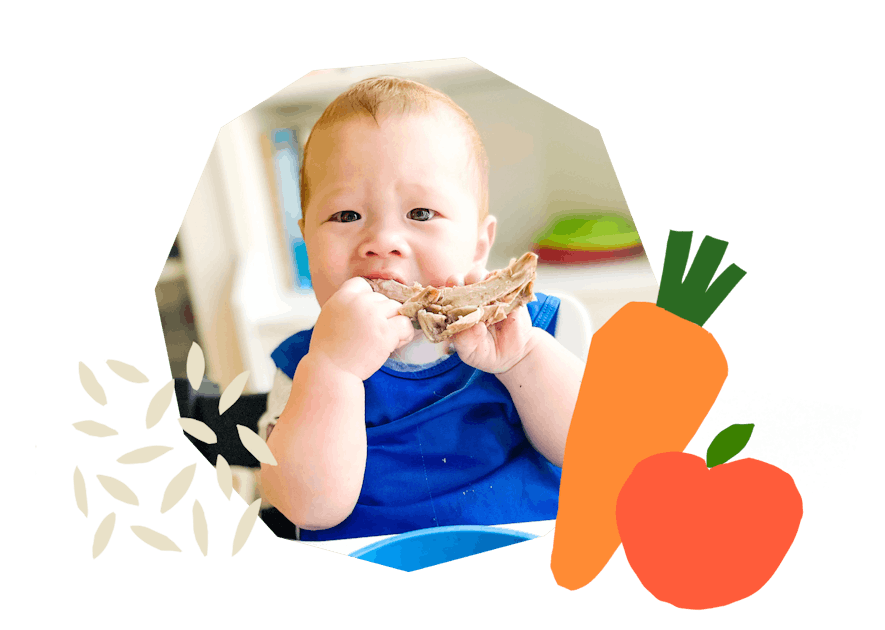
The Program Baby-Led Weaning with Katie Ferraro
A step-by-step digital program for starting solid foods safely and navigating the original 100 FIRST FOODS™ meal plan with baby-led weaning.
 EXPERT-LED, PROVEN APPROACH TO EATING REAL FOOD
EXPERT-LED, PROVEN APPROACH TO EATING REAL FOOD CONCISE VIDEO TRAININGS TO MASTER BABY-LED WEANING
CONCISE VIDEO TRAININGS TO MASTER BABY-LED WEANING 100 FIRST FOODS DAILY MEAL PLAN WITH FOOD PREP VIDEOS
100 FIRST FOODS DAILY MEAL PLAN WITH FOOD PREP VIDEOS
Baby-Led Weaning for Beginners Free Workshop
Is your baby ready to start solid foods, but you’re not sure where to start? Get ready to give your baby a solid foundation to a lifetime of loving real food…even if you’re feeling overwhelmed or confused about this next stage of infant feeding.
Get baby-led weaning recipes and tips delivered to your email inbox.

